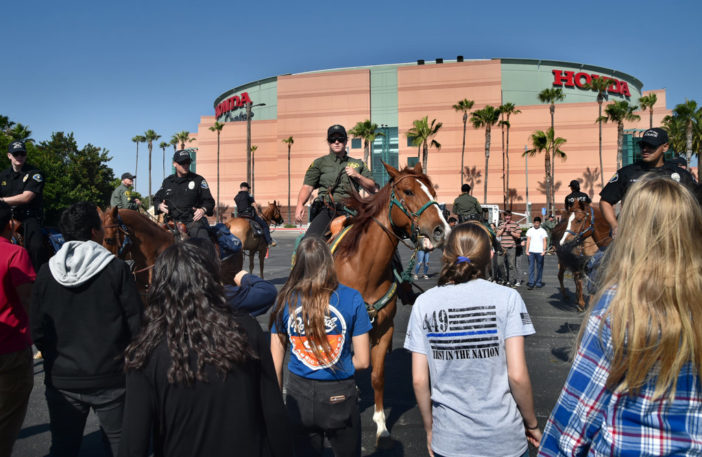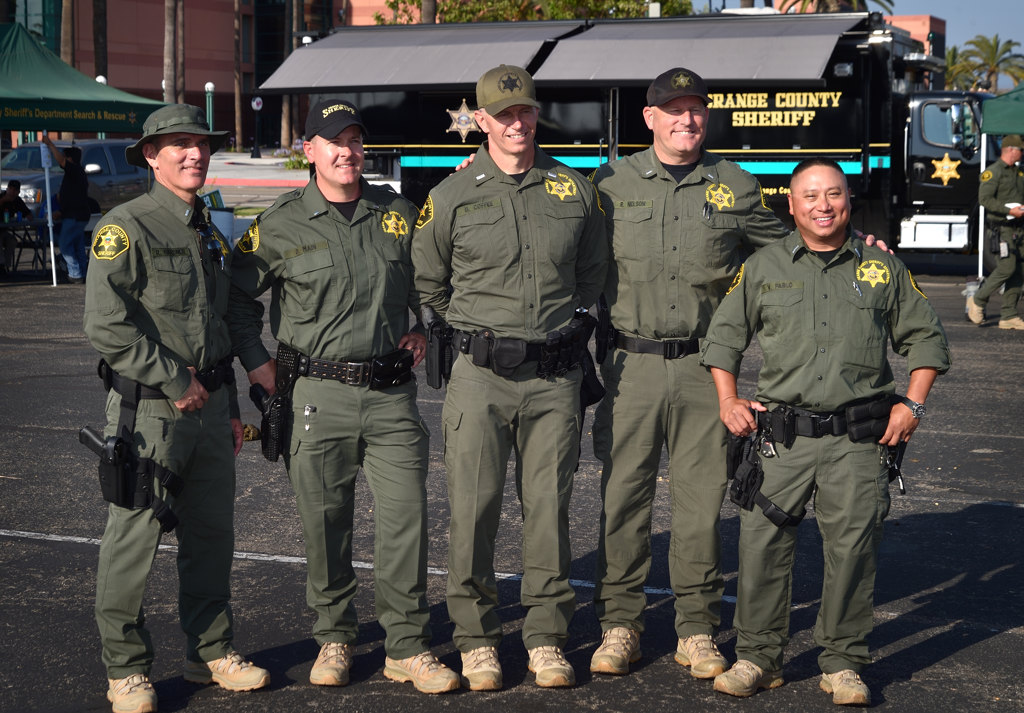A protester paces back and forth in front of a line of law enforcement officers, standing elbow to elbow in the parking lot of the Honda Center in Anaheim.
A contingent of officers mounted on horses is positioned behind the forces on the ground.

OCSD deputies run through training exercise on safely handling unruly crowds.
Photo by Steven Georges/Behind the Badge
The protester is a burly dude, and he’s amped up.
His head is covered by a hoodie and a scarf is wrapped around his face, so all that’s visible are his dilated pupils glaring through black-rimmed glasses.
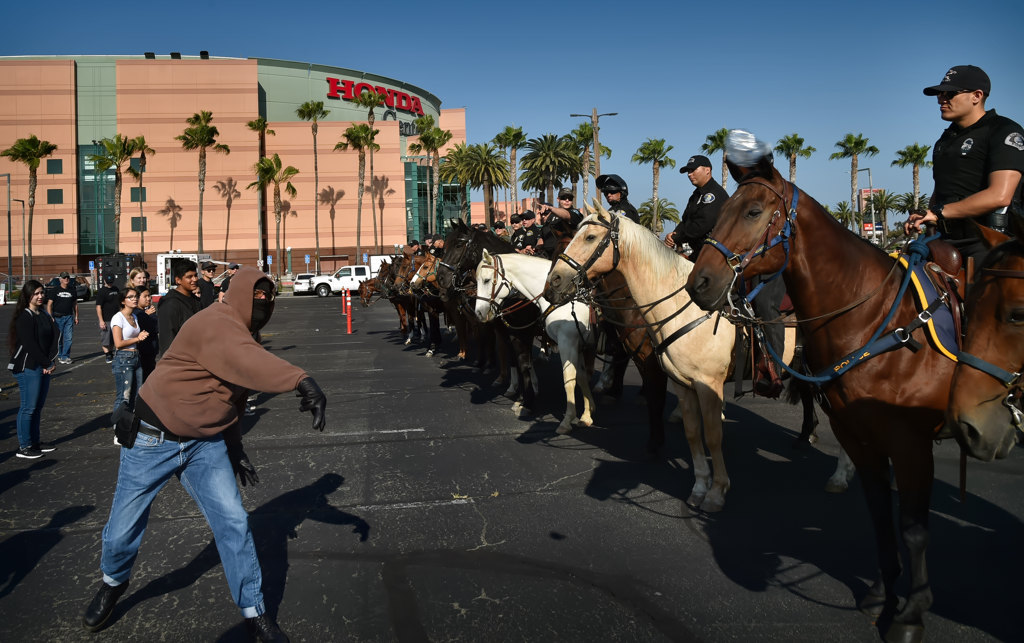
Mounted units go through training on how to manage demonstrators.
Photo by Steven Georges/Behind the Badge
He gets nose to nose with officers and shouts in their face and becomes increasingly more animated and belligerent.
Ultimately, the protestor is arrested after attempting to incite his fellow protestors into acts of aggression.

OCSD deputies are trained how to move a demonstrator who has been arrested safely away from the other demonstrators during a crowd-control training exercise.
Photo by Steven Georges/Behind the Badge
This demonstration wasn’t real, but instead was a coordinated training exercise involving multiple agencies and organized by the Orange County Sheriff’s Department. The training took place June 19.
With election season about 17 months away, and numerous public demonstrations likely to take place, this scenario could be quite possible – and far worse.
Preparation is a must.
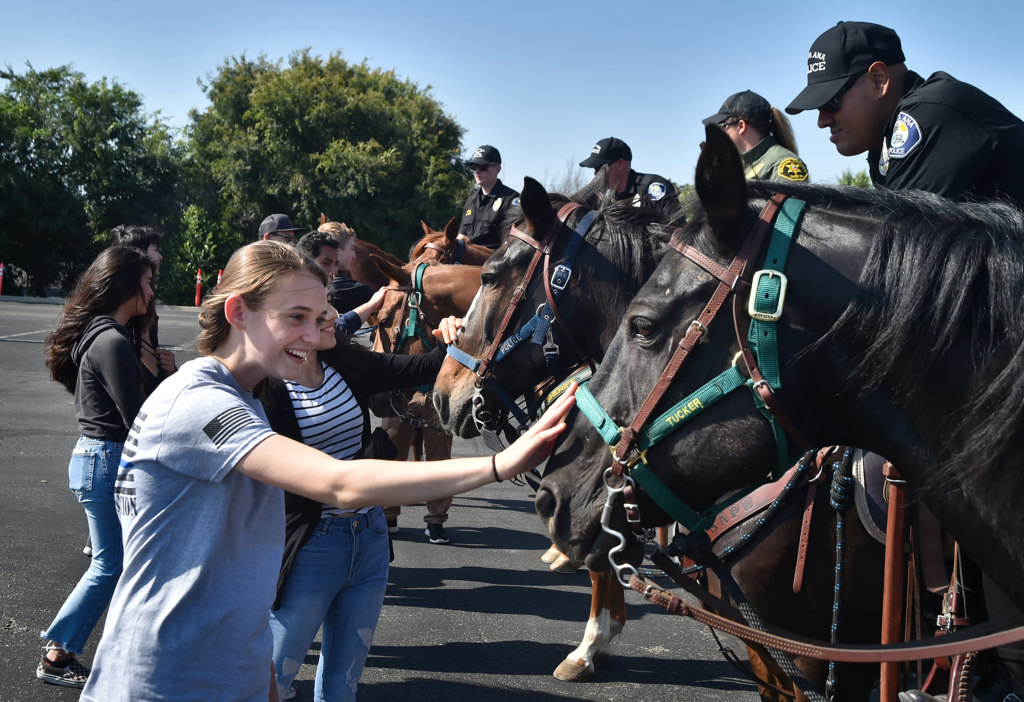
People playing the part of protesters take advantage of a break from the training exercises to pet the police horses.
Photo by Steven Georges/Behind the Badge
“We’re training to make sure that people have their right to express their First Amendment rights,” said Lt. Richard Nelson of the OCSD. Nelson oversees the agency’s Reserve Bureau, which recently became part of its Mutual Aid Bureau.
“I tell the guys they are on the front lines of democracy,” Nelson said. “We’re here to protect the rights of the protesters as well as the community’s rights, the people traveling through the community, as well as the business owners and residents in the community.”
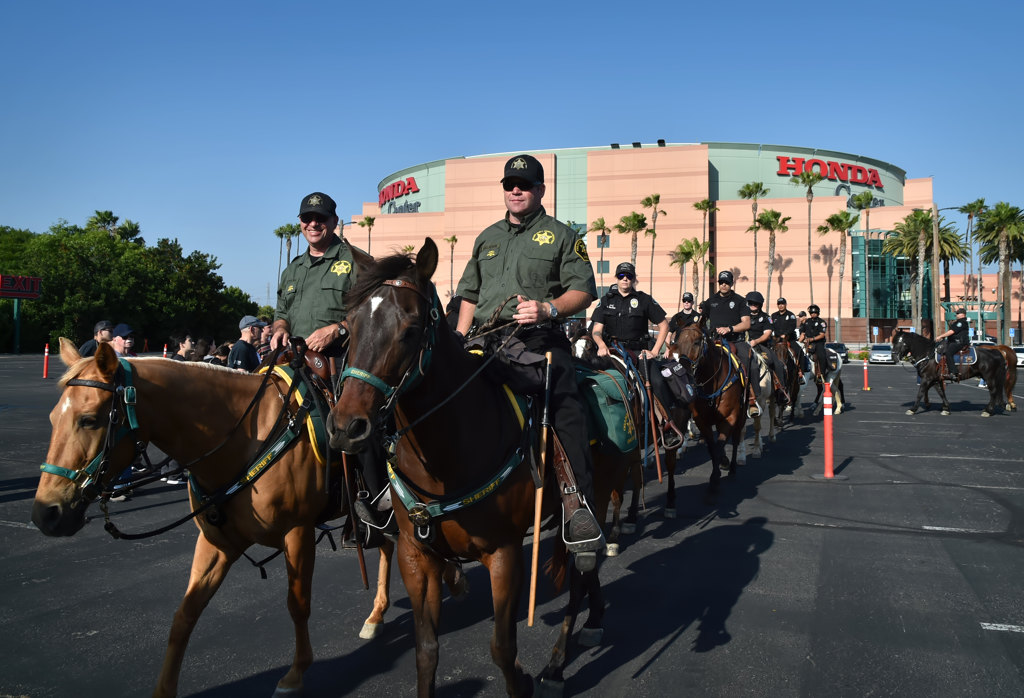
Mounted deputies and officers participate in a crowd-control training exercise at the Honda Center.
Photo by Steven Georges/Behind the Badge
Nelson was one of the main organizers of the Civil Unrest Mobile Field Force training, which involved 36 horses from multiple agencies and 200 personnel on the ground. Participants practiced the formation of skirmish lines, arrest circles and integrating line personnel with the horses.
“And if there are any mistakes that take place, this is the time to see those mistakes and improve on those things,” said Sgt. Michael Lee of the Anaheim Police Department. Lee oversees that agency’s seven-person mounted unit. “When you pool together (resources), you can handle a large event rather successfully, but you need to be on the same page to make sure it goes smoothly.”
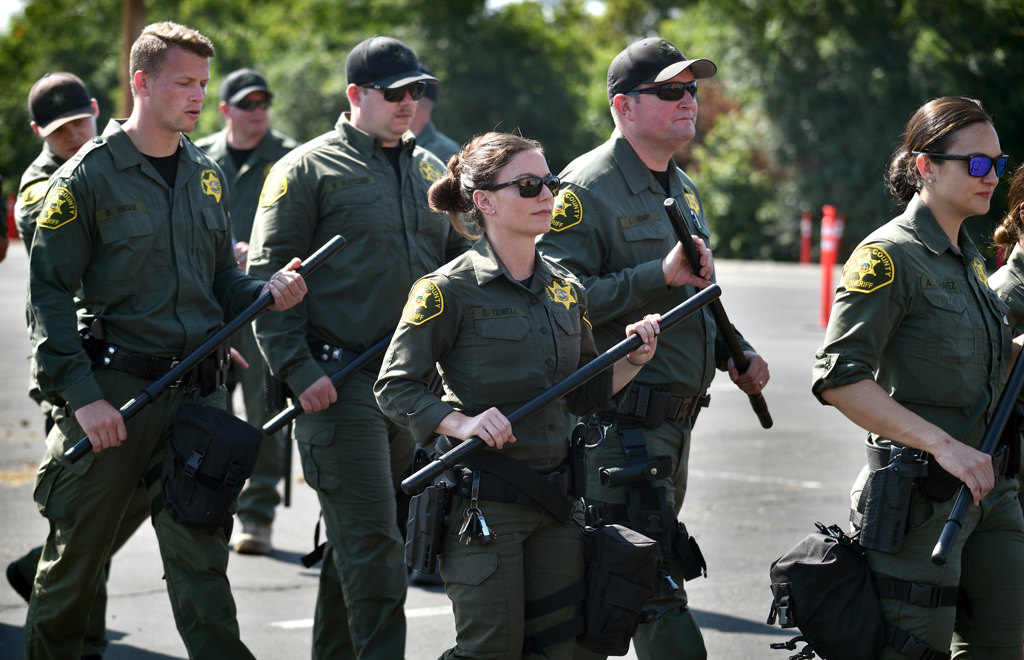
OCSD deputies Brandon Virgoe, left, Ryan Fletcher, Davida Tidwell, Jeremiah Henry and Chavez participate in crowd-control exercises at the Honda Center.
Photo by Steven Georges/Behind the Badge
As part of the training, horses were exposed to fireworks and screaming crowds.
In preparing for events such as political rallies, law enforcement officials determine ahead of time what kind of force is needed to protect everybody and keep the peace, Nelson said.
“If it goes bad, then we have mutual aid protocols in place throughout the county to bring in additional resources,” he said. “If something is not planned, like a flood, fire, things of that nature, then we have a Sheriff’s Response Team that we can also utilize.”

OCSD deputies run through training exercise on safely handling crowds.
Photo by Steven Georges/Behind the Badge
Law enforcement on the ground along with mounted units managed to keep the peace for the most part at a rowdy political rally outside the Anaheim Convention Center on May 25, 2016, about six months prior to the presidential election.
As the rally was winding down, however, and protestors began throwing rocks, police declared the protest to be unlawful. Eight people were arrested.

A line of mounted units from various law enforcement agencies breaks through a line of deputies to form a barrier between the protesters and ground deputies during a training exercise.
Photo by Steven Georges/Behind the Badge
On April 29, 2016, a political rally in Costa Mesa was an example of a planned event that got out of hand.
The rally resulted in 17 arrests after five police cars were damaged.
“We don’t want the first time that we come together and meet face-to-face to be in a real-life event,” said Lt. Bill Bingham of the Irvine Police Department, whose agency had three members of the mounted team taking part in the training.
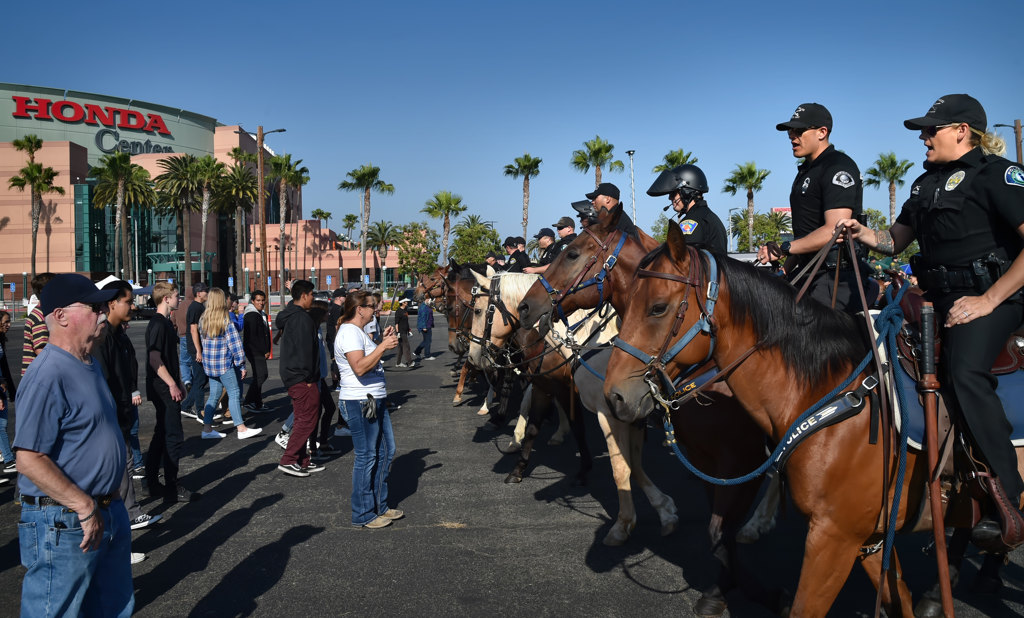
Mounted units from various law enforcement agencies run through formations on how to safely handle unruly protestors.
Photo by Steven Georges/Behind the Badge
“These are low-frequency events for the most part, so to have a regional approach is the way to do it, but we have to train. There are things that we have to get right, and the way to make sure that we get it right is to train.”

Mounted units from various law enforcement agencies run through crowd-control exercises.
Photo by Steven Georges/Behind the Badge
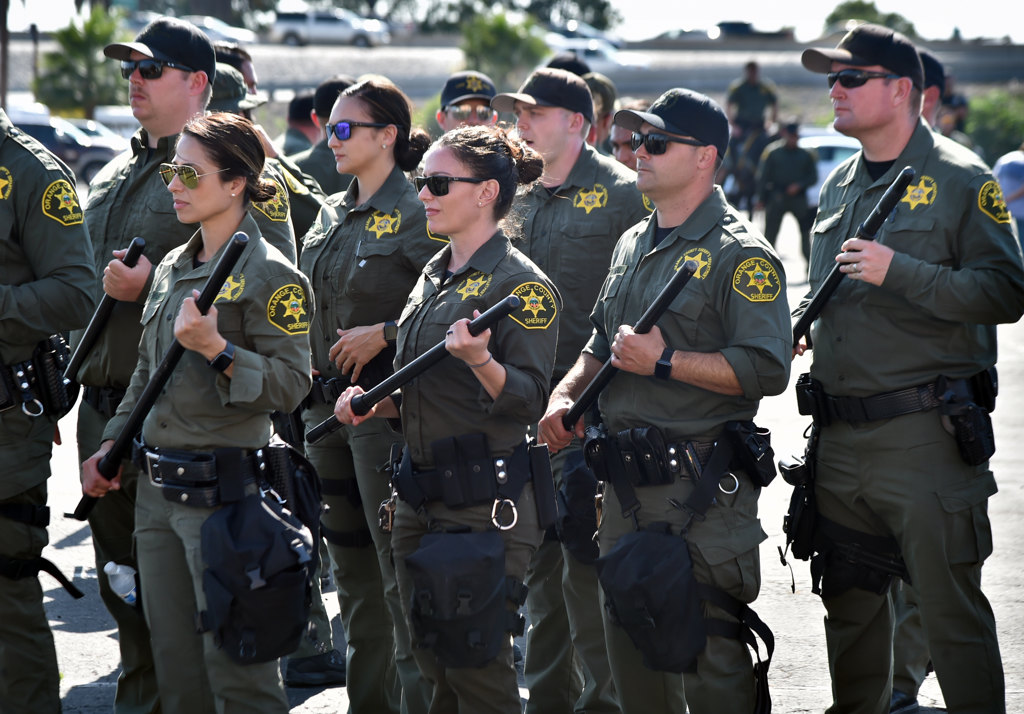
OCSD deputies participate in crowd-control training exercises with mounted units.
Photo by Steven Georges/Behind the Badge
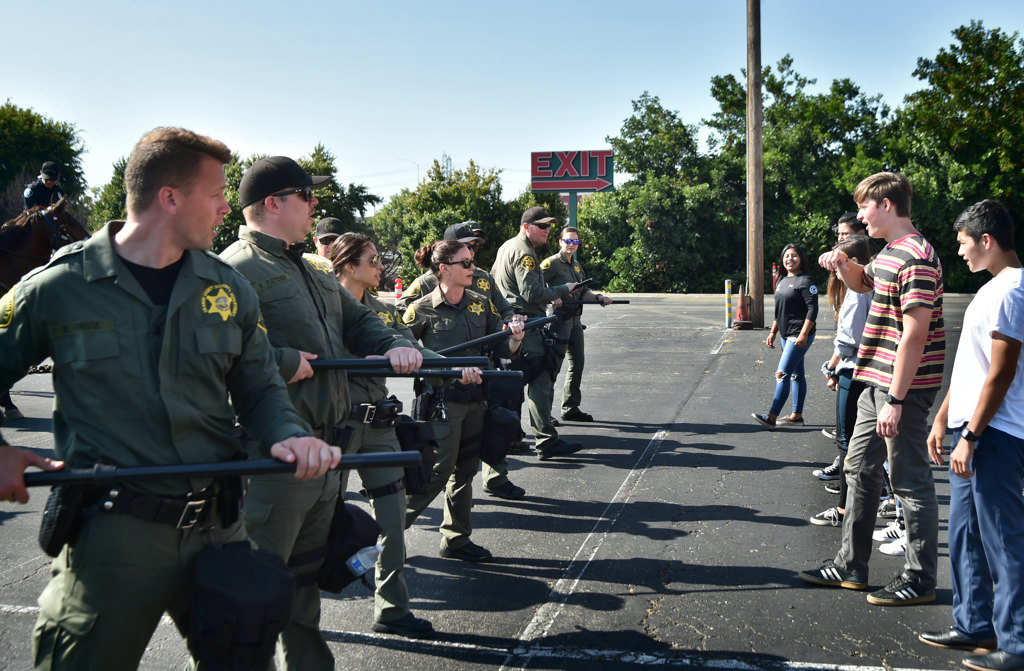
OCSD deputies form a line while training on how to move unruly protesters.
Photo by Steven Georges/Behind the Badge
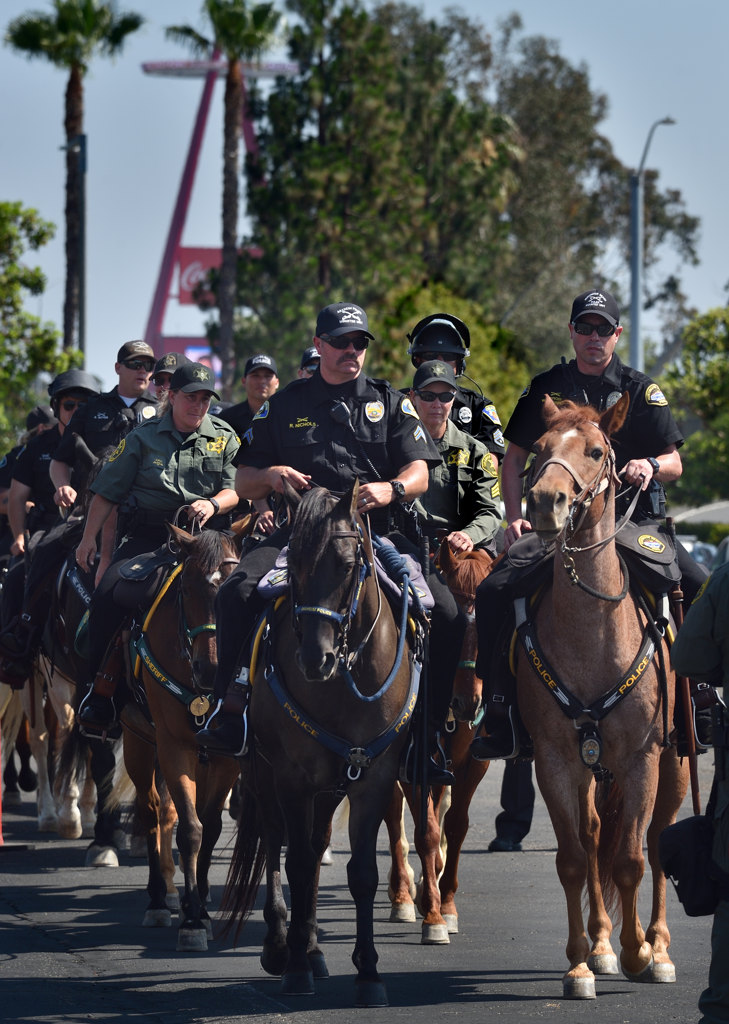
Mounted units from various law enforcement agencies, led by Anaheim PD Officer Ryan Nichols, left, and Huntington Beach PD Officer William Brownlee enter the training area in the parking lot of the Honda Center for control exercises. Behind them are OCSD Dep. Cynthia A Pais, left, and Sgt. Deann Kurimay.
Photo by Steven Georges/Behind the Badge
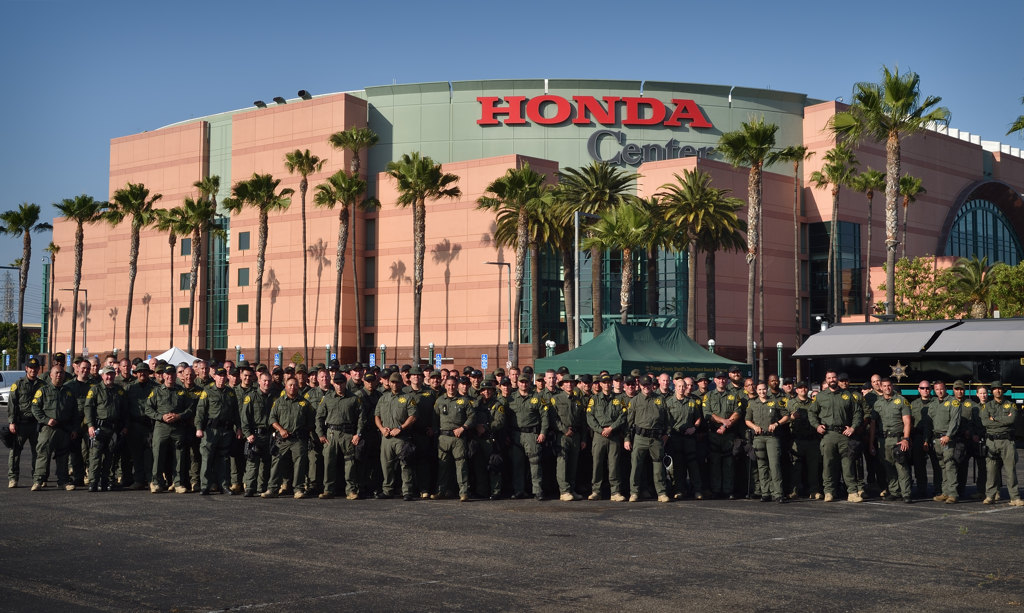
OCSD participants of a crowd control training exercise gather in front of the Honda Center.
Photo by Steven Georges/Behind the Badge
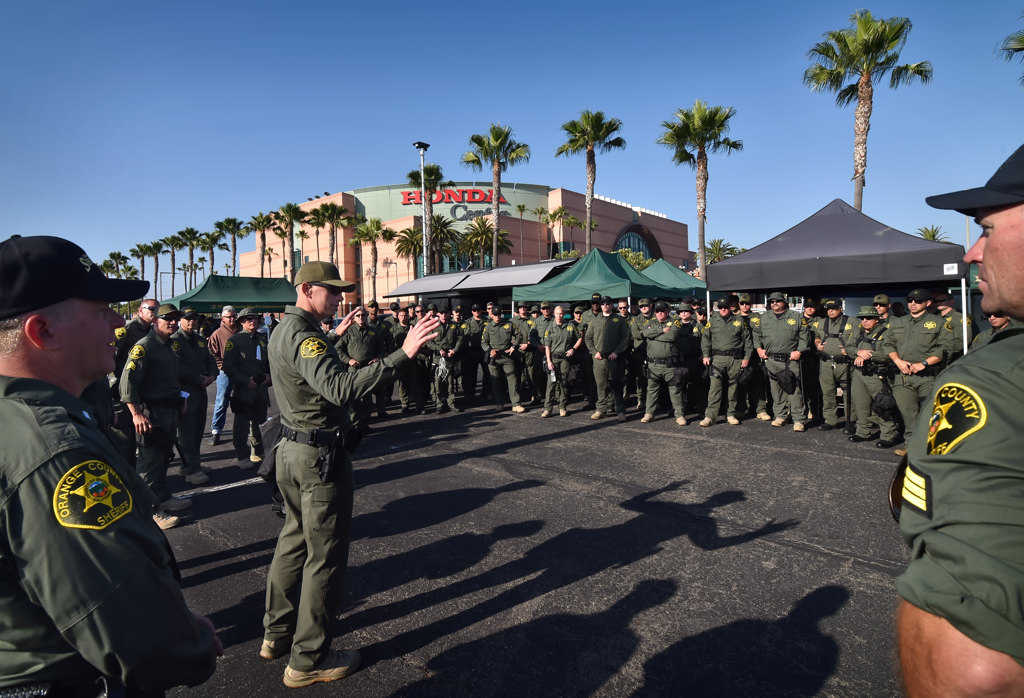
OCSD deputies who participated in a crowd control training exercise get together to discuss the days training.
Photo by Steven Georges/Behind the Badge
 Behind the Badge
Behind the Badge
